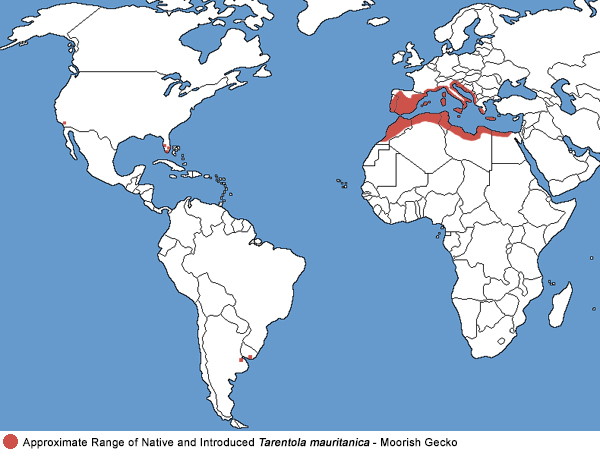Moorish Gecko - Tarentola mauritanica
(Linnaeus, 1758)Description • Taxonomy • Species Description • Scientific Name • Alt. Names • Similar Herps • References • Conservation Status

Red: Areas where this non-native species
is apparently established
These are just the locations that I know about.
There are probably more. If you see a lizard that looks like this living in the wild anywhere in California that is not shown on the map above or the county list below - please contact me and send a picture if you can for verification.
Click on the map for a topographical view
Map with California County Names
List of Non-Native Reptiles and Amphibians
Established in California
This species has been introduced into California. It is not a native species. |
||||||||||||||||||||||||||||||||||||||||||||||||||||||||||
 |
||||||||||||||||||||||||||||||||||||||||||||||||||||||||||
| Adult, Hanford, Kings County © Monte Lininger | ||||||||||||||||||||||||||||||||||||||||||||||||||||||||||
 |
||||||||||||||||||||||||||||||||||||||||||||||||||||||||||
| Adult, San Diego County © Paul Pecoraro | ||||||||||||||||||||||||||||||||||||||||||||||||||||||||||
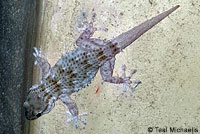 |
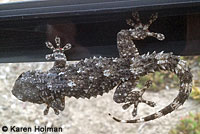 |
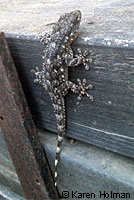 |
||||||||||||||||||||||||||||||||||||||||||||||||||||||||
| Adult, San Diego, with a completely re-generated tail. © Teal Michaelis |
Adult, San Diego County © Karen Holman | |||||||||||||||||||||||||||||||||||||||||||||||||||||||||
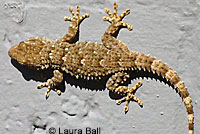 |
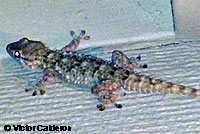 |
 |
||||||||||||||||||||||||||||||||||||||||||||||||||||||||
| Adult, San Diego County © Laura Ball | Adult, Hanford, Kings County © Victor Calderon | |||||||||||||||||||||||||||||||||||||||||||||||||||||||||
 |
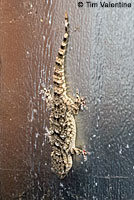 |
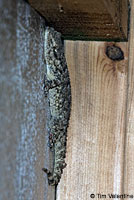 |
||||||||||||||||||||||||||||||||||||||||||||||||||||||||
| Adult, San Diego County © Kristen Bartelt |
Adult, San Diego County © Tim Valentine | |||||||||||||||||||||||||||||||||||||||||||||||||||||||||
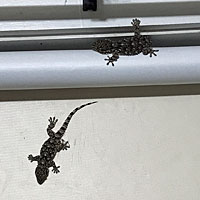 |
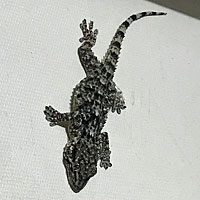 |
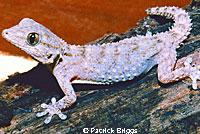 |
||||||||||||||||||||||||||||||||||||||||||||||||||||||||
| Two adults (one missing its tail), Santee, San Diego County | Adult, Kings County © Patrick Briggs |
|||||||||||||||||||||||||||||||||||||||||||||||||||||||||
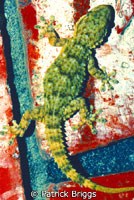 |
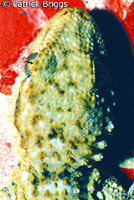 |
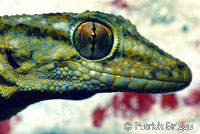 |
||||||||||||||||||||||||||||||||||||||||||||||||||||||||
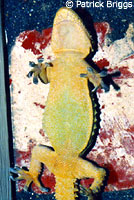 |
 |
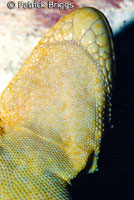 |
||||||||||||||||||||||||||||||||||||||||||||||||||||||||
| The above photos are all views of a single adult gecko found on a building in Hanford, Kings County. All © Patrick Briggs |
||||||||||||||||||||||||||||||||||||||||||||||||||||||||||
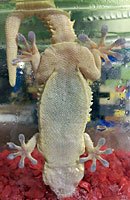 |
 |
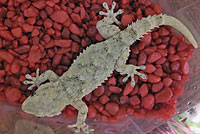 |
||||||||||||||||||||||||||||||||||||||||||||||||||||||||
| Adult, Spring Valley, San Diego County. The pictures on the left show the gecko hanging upside down attached to a glass surface by its specialized toes. |
||||||||||||||||||||||||||||||||||||||||||||||||||||||||||
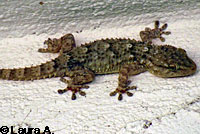 |
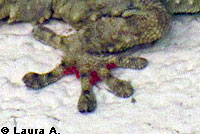 |
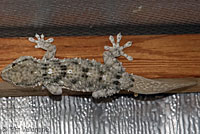 |
||||||||||||||||||||||||||||||||||||||||||||||||||||||||
| This adult found in El Cajon has red mites on its body and between its toes. © Laura A. |
Adult with regenerated tail, San Diego County © Tim Valentine | |||||||||||||||||||||||||||||||||||||||||||||||||||||||||
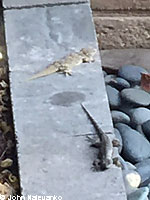 |
 |
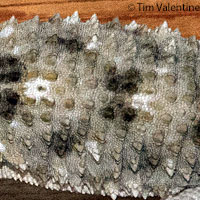 |
||||||||||||||||||||||||||||||||||||||||||||||||||||||||
| © John Nalevanko This adult Moorish Gecko, a nocturnal species, is sometimes seen in the daytime in a yard in San Diego County where it basks in the sun next to an adult Western Fence Lizard, but only briefly - not as long as the fence lizard. Juvenile fence lizards have not been seen basking near the larger gecko, probably to avoid being eaten. |
© John Nalevanko Six years after the picture to the left was taken, we can see what might be the same Moorish Gecko where it is seen almost every day basking beside one or two adult Western Fence Lizards. |
Moorish Geckos have small granular scales with intermittent large tubercles. | ||||||||||||||||||||||||||||||||||||||||||||||||||||||||
| Juveniles | ||||||||||||||||||||||||||||||||||||||||||||||||||||||||||
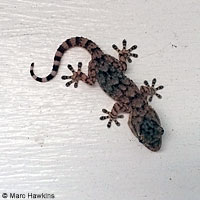 |
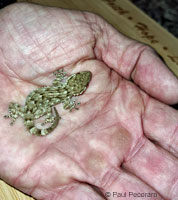 |
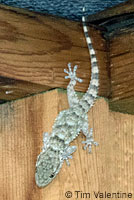 |
||||||||||||||||||||||||||||||||||||||||||||||||||||||||
| Tiny juvenile about 2 inches long including tail, El Cajon, San Diego County. © Marc Hawkins | Juvenile, San Diego County © Paul Pecoraro |
Juvenile, San Diego County © Tim Valentine |
||||||||||||||||||||||||||||||||||||||||||||||||||||||||
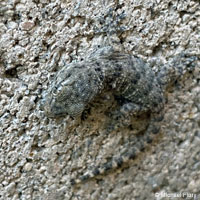 |
||||||||||||||||||||||||||||||||||||||||||||||||||||||||||
| Juvenile on a brick wall, San Diego County © Michael Flory | ||||||||||||||||||||||||||||||||||||||||||||||||||||||||||
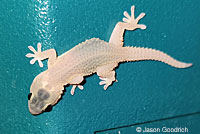 |
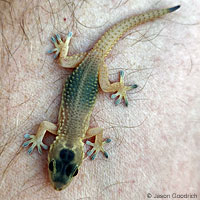 |
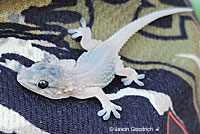 |
||||||||||||||||||||||||||||||||||||||||||||||||||||||||
| Two juvenile Moorish Geckos, about 2 inches in length, found in San Diego County, that appear to be leucistic. © Jason Goodrich |
||||||||||||||||||||||||||||||||||||||||||||||||||||||||||
|
||||||||||||||||||||||||||||||||||||||||||||||||||||||||||
|
||||||||||||||||||||||||||||||||||||||||||||||||||||||||||
|
The following conservation status listings for this animal are taken from the July 2025 State of California Special Animals List and the July 2025 Federally Listed Endangered and Threatened Animals of California list (unless indicated otherwise below.) Both lists are produced by multiple agencies every year, and sometimes more than once per year, so the conservation status listing information found below might not be from the most recent lists, but they don't change a great deal from year to year.. To make sure you are seeing the most recent listings, go to this California Department of Fish and Wildlife web page where you can search for and download both lists: https://www.wildlife.ca.gov/Data/CNDDB/Plants-and-Animals. A detailed explanation of the meaning of the status listing symbols can be found at the beginning of the two lists. For quick reference, I have included them on my Special Status Information page. If no status is listed here, the animal is not included on either list. This most likely indicates that there are no serious conservation concerns for the animal. To find out more about an animal's status you can also go to the NatureServe and IUCN websites to check their rankings. Check the current California Department of Fish and Wildlife sport fishing regulations to find out if this animal can be legally pursued and handled or collected with possession of a current fishing license. You can also look at the summary of the sport fishing regulations as they apply only to reptiles and amphibians that has been made for this website. There are no significant conservation concerns for this non-native animal in California. |
||
| Organization | Status Listing | Notes |
| NatureServe Global Ranking | ||
| NatureServe State Ranking | ||
| U.S. Endangered Species Act (ESA) | None | |
| California Endangered Species Act (CESA) | None | |
| California Department of Fish and Wildlife | None | |
| Bureau of Land Management | None | |
| USDA Forest Service | None | |
| IUCN | ||
|
|
||
Return to the Top
© 2000 -


